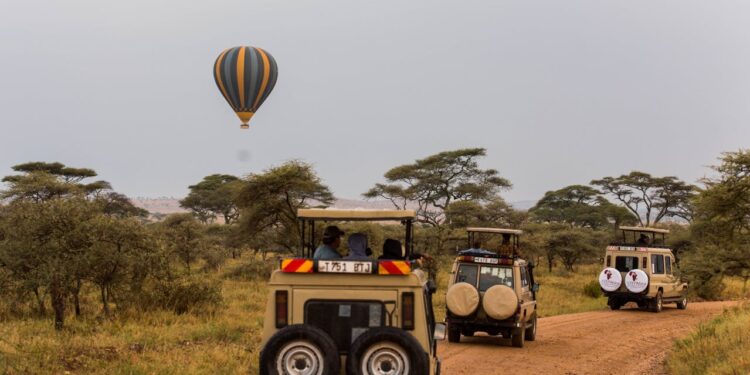Learn how to prepare your car for long-distance travel in Uganda with expert car care tips, safety checks, and travel advice for Ugandan roads.
Why Preparation Matters in Uganda
Driving across Uganda’s scenic landscapes—from Kampala to Gulu or Fort Portal to Mbale—is an experience like no other. But before you rev your engine and hit the road, vehicle preparation is crucial. Ugandan roads can vary dramatically in condition, weather shifts suddenly, and help might be far away during remote journeys.
Proper preparation isn’t just about convenience—it’s a matter of safety, reliability, and cost-efficiency.
1. Inspect the Vehicle’s Overall Condition
Before anything else, a general vehicle inspection gives you peace of mind.
🔧 Check Engine Health
Listen for unusual sounds. Look for oil leaks under the car. Confirm there are no dashboard warning lights on. If your car hasn’t been serviced recently, do it before the trip.
🛑 Examine the Braking System
Uganda’s hilly terrain, especially around Kabale or Fort Portal, demands excellent brakes. Check brake pads and brake fluid. A squeaking or grinding noise is a red flag.
🚗 Inspect Suspension and Steering
Bumpy village roads and potholes on highways can strain your suspension. If the car pulls to one side or makes knocking sounds on bumps, get it checked.
2. Fluids and Lubricants: Don’t Hit the Road Without These
Your car’s fluids act like blood and lubricants to keep it running smoothly.
🛠️ Engine Oil and Filter
Fresh engine oil reduces friction and prevents overheating. Replace oil and filter if the last change was over 5,000 km ago.
🚿 Brake Fluid, Coolant & Power Steering
Low brake fluid? It’s a disaster waiting to happen. Overheating? Your coolant’s to blame. Check and top up all three.
💦 Windshield Washer Fluid
Dusty roads and sudden showers mean dirty windshields. Always fill this up and check your wipers too.
3. Battery Condition: The Heart of the Vehicle
A dead battery in the middle of nowhere can ruin everything.
⚡ Voltage and Charging Rate
Use a multimeter or get a professional to check the battery voltage. 12.6V or higher is ideal.
🧼 Terminal Cleanliness and Stability
Rust or loose terminals? Clean them with baking soda and water, then tighten them. This avoids starting issues.
4. Tyres: The Real Road Warriors
Uganda’s mix of tarmac, gravel, and mud roads requires robust tyres.
📏 Check Tyre Tread and Pressure
Use a tread gauge or the “coin test.” Ensure tyre pressure is as per manufacturer specs—found on the door sticker.
🆘 Spare Tyre & Jack Kit
Make sure your spare is inflated and tools like a jack, wrench, and tyre iron are in the boot. Practice changing a tyre beforehand!
5. Lights and Indicators: Visibility is Safety
Don’t get caught with dim headlights or failed indicators, especially on dark rural roads.
🔦 Headlights and Fog Lights
Test both high and low beams. Uganda can get misty in the hills; fog lights are useful.
🚦 Turn Signals and Brake Lights
Have someone help you check these from the outside. Replace any burnt-out bulbs immediately.
6. Load and Luggage: Smart Packing Tips
Don’t overload your car or pack like you’re moving house.
⚖️ Distribute Weight Evenly
Balance weight between the back and front. Keep heavier items low and near the vehicle’s center.
🔐 Secure Items Properly
Use straps, nets, or dividers. In a sudden brake, loose luggage can become dangerous.
7. Emergency Kit: Always Be Ready
Uganda’s unpredictable terrain requires being well-equipped.
🚑 Must-Have Items for Uganda Travel
- First aid kit
- Jumper cables
- Reflective triangles
- Flashlight and extra batteries
- Fire extinguisher
- Tow rope
- Multipurpose tool
- Drinking water and snacks
8. Navigation and Communication Tools
Don’t rely on Google Maps alone—cell service isn’t always available.
📱 GPS Apps & Offline Maps
Download offline maps from Google or Maps.me. Always know where you’re going even without signal.
🔌 Phone Chargers and Emergency Contacts
Carry a car charger and a fully charged power bank. Save numbers of roadside assistance and a mechanic in each town on your route.
9. Pre-Journey Checklist
Here’s a quick table to cross-check everything before you leave:
| Item | Status |
|---|---|
| Engine oil changed | ✅ |
| Tyre pressure correct | ✅ |
| Brakes tested | ✅ |
| Battery checked | ✅ |
| Emergency kit packed | ✅ |
| Fuel tank full | ✅ |
| Lights tested | ✅ |
Print this or keep it saved on your phone!
10. Driving Tips for Long-Distance Trips in Uganda
Driving 400+ km in Uganda isn’t like a highway cruise elsewhere.
🛣️ Road Types and Speed Guidelines
Be prepared for smooth tarmac near cities, but potholes and gravel as you head inland. Drive 40-80 km/h on such roads.
🧯 Dealing with Breakdowns and Roadblocks
Always pull off safely. Use hazard lights and place reflective triangles. If you need a tow, most Ugandan towns have roadside services—just ask the locals.
11. Where to Get Your Car Checked in Uganda
Don’t wait until your car fails.
🧑🔧 Local Mechanics and Auto Shops
Major towns like Kampala, Jinja, Mbarara, and Gulu have reliable mechanics and diagnostic centers.
🧭 Recommended Online Platforms
Use https://automag.ug/ to stay updated on road conditions, workshops, and expert reviews of cars best suited for long drives in Uganda.
12. Choosing the Right Car for Long Distances
Not all cars are built for endurance. Pick wisely.
⛽ Fuel Efficiency and Comfort
Cars like the Toyota Land Cruiser, Subaru Outback, and Nissan X-Trail are good for Uganda’s diverse terrain. If fuel consumption is a concern, look into Toyota Premio or Honda Fit Shuttle.
🔍 Explore Options on Auto24 Uganda
Want to buy or upgrade before your next trip? Check out reliable listings on https://auto24.ug/. They feature second-hand cars suited for long-distance travel and all kinds of terrain.
Frequently Asked Questions (FAQs)
1. What’s the best car for long-distance travel in Uganda?
Toyota Land Cruiser, Subaru Forester, or Nissan X-Trail—rugged, comfortable, and reliable.
2. How often should I change my engine oil before a road trip?
Every 5,000–7,000 km, or earlier if you’re driving in dusty or mountainous areas.
3. Do I need a 4WD for Ugandan long-distance trips?
Not always, but it’s highly recommended for rural and off-road destinations.
4. What tyre pressure is ideal?
Follow the manufacturer’s guide, usually between 30-35 PSI, depending on the car and load.
5. Is it safe to travel at night in Uganda?
Not recommended—roads are poorly lit, and emergency help is harder to get.
6. Where can I find road updates or travel tips?
Visit https://automag.ug/ for the latest automotive news, road tips, and reviews.
Conclusion
Long-distance travel across Uganda offers unforgettable sights—from the Rwenzori mountains to the Nile River. But preparation is everything. Take the time to inspect your car, pack smartly, and drive cautiously. With the right mindset and the tips in this guide, you’ll not only get there safely—you’ll enjoy every moment of the journey.




